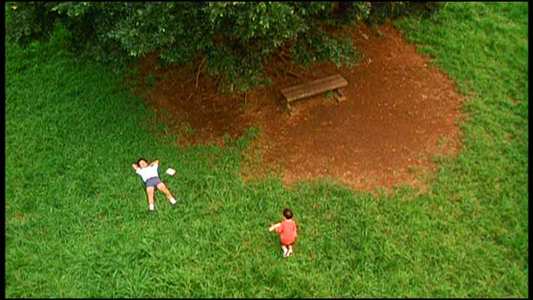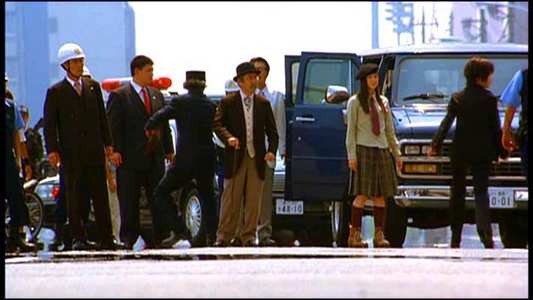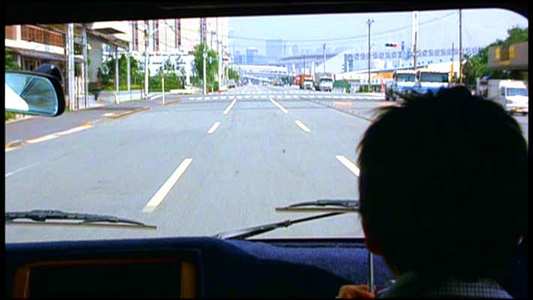Review of Tetsujin 28: The Movie
Introduction
Comics are cheap to produce. At their most basic, all they require is one person sat behind a drawing board, producing four squares of black ink and wit a week, and they can have millions glued to various adventures. Imagination is the limit, and fans have been thrilled at the adventures of a beagle turned World War 1 flying ace, lasagne loving cat, magic potion swilling Gaul, Kryptonian man of steel, lantern jawed post apocalyptic judge and countless others. Once popularity strikes, these get converted into comic books, graphic novels and manga, expanding and developing stories and characters that could never work in the funnies section of a newspaper, also adding colour while they are at it. Then, when sales indicate that you have a hot property on your hands, the jump to television occurs. Here is where you really start spending your money. You have to hire a team of animators, writers, as well as voice actors, your budget spiralling, as now you have to tell a story in 24 frames per second over 20 or so minutes, where originally all you had to do was fill four little boxes a week. But you`re still raking in the profits, especially from the merchandising to go with the series. But you know that you have truly arrived once the live action movie is announced. Exhausting a team of animators may be expensive enough, but now you`re looking for a cast that looks as well as sounds the part, and special effects galore to bring your vision to the screen. Where once all you had to worry about was filling those few boxes, now you have to pay someone to worry about a budget that would bankroll most Caribbean nations. But once it hits the silver screen, it`s all worth it, as countless summer blockbusters would indicate.
What`s true for Hollywood is no less true for other territories, and in Japan where comics, or manga are in the cultural mainstream to a far greater degree than in the West, it`s a lot more common to see comic book characters brought to life on celluloid. But the expensive, epic superhero genre is just a big a risk as anywhere else. It was only 2005 when Tetsujin 28 (a.k.a. Gigantor) finally made its live action big screen debut, yet the Tetsujin 28 story began as a manga in post war Japan almost half a century ago, and has been brought to the screen as an anime on more than one occasion. I have been reviewing the latest such adaptation on this site over the past few months, charmed by its twee retro sensibilities. Manga Entertainment have also acquired the rights to distribute the live action version, and the review disc fell into my lap for a thorough examination. I must admit to a little trepidation about this, as Tetsujin is about giant robots rampaging through Tokyo. I was anticipating men in suits trampling miniatures, but I should instead direct my concerns towards those poor, homeless, redundant model makers. This is the 21st Century after all, and such wholesale urban destruction can be just as easily accomplished within the innards of a PC.
Close to the end of World War II, with Japan on the back foot, scientists began a project to create an ultimate weapon that would allow the nation to prevail. Before it could be unleashed however, the war ended and the programme was consigned to history. This is all forgotten in the present day, where Shotaro Kaneda is a schoolboy much like any other. He lives with his mother, likes flying model airplanes, and has talent as an artist. All that really distinguishes him is a photographic memory, and some unresolved nightmares from when he was a little child. His mother is oddly protective of him, and is quick to turn off the TV whenever there is any mention of robotics. Which is why they miss the news report of a giant metal hand flying out of the house of reclusive former business tycoon Takumi. At the same time Takumi goes missing. A hand by itself is pretty useless, but soon the rest of the robot shows up, a towering behemoth named Black Ox, under the control of a mysterious terrorist named Zero. Black Ox proceeds to lay waste to Tokyo, and unless control of the city is turned over to Zero, worse lies in store. At times like these, heroes are called forth, and an elderly scientist named Ayabe contacts Shotaro to give him his dead father`s legacy. What Shotaro`s mother hadn`t told him was that his father, and grandfather before him were both robotic scientists, and his father had given his life to create a servant of peace, from the weapon that was Tetsujin 28. Courtesy of his photographic memory, only Shotaro can work Tetsujin`s remote control. But is he ready to face off against the dreaded Black Ox, and is anyone prepared for the fiendish plan that lies behind the appearance of the dread robot?

Video
Tetsujin 28: The Movie gets a 1.85:1 anamorphic transfer. It`s one of those NTSC-PAL conversions so often seen with Japanese films, and results in an image that is a little soft, and prone to occasional ghosting. There are some minor aliasing problems, and moiré around fine detail, as well as a smidgen of grain. It`s all perfectly watchable though.
As you would expect from a film of this genre, there is plenty of CGI. The robots look as well accomplished as any in Sky Captain. Unfortunately the movie is firmly set in the real world, so the robots rarely seem to fit into their backgrounds. The digital effects are the one real visual problem with this film, and none are up to the level you would expect from a big budget production. In fact, all of them stand out, which is one thing you don`t want digital effects to do. Obviously the robots are unreal, but the effects they have on their environment, the damage they inflict is equally as illusory. I had to do something with a modern film regarding visual effects that I haven`t done in over ten years now, I had to suspend my disbelief.

Audio
Manga Entertainment provide Japanese soundtracks in DD 2.0, 5.1 and DTS flavours, along with English subtitles. The familiar Tetsujin theme tune is there in all its glory, and I`m hard pressed to get it out of my head now. The surround track is decent enough, with plenty of presence when it comes to the effects, ambience and music. The dialogue is on rare occasions a little muffled, but that`s where the subtitles come in.
At its heart, Tetsujin 28 is a children`s film, and much as I loathe the dubbing of foreign films, I feel that Manga may have missed a trick and narrowed their audience by not providing an English language dub here.

Features
Just trailers for the Tetsujin 28 anime, Millennium Actress, and Robotech. Incidentally, if you have time to kill, you can visit terratag.com and after exploring a bit (look under Info), you can download a template and instructions that will allow you to build your own Tetsujin 28 from paper, glue and oodles of patience. Check the articles section of this site to see what you are letting yourself in for.

Conclusion
There`s been a long tradition in Japanese cinema for major metropolises to fall victim to colossal terrors, whether they come from the deep, from the stars, or as in this case from the hand of man himself. Tetsujin 28 is very much a monster movie for the kids, with good versus evil battling in the form of giant robots, as the citizens of a beleaguered city run in all directions, panicked and screaming. It`s not quite a faithful adaptation, but it manages to entertain without really distinguishing itself enough to become memorable.
Rascally rampaging robots aside, I had one concern about Tetsujin 28, and that was the character of Shotaro Kaneda. In the original manga, and the later animes, he is a precocious boy detective, a ten year old who can take on villains four times his size, drives a sports car, and is the go to guy for the Tokyo Chief of Police. There is only so much disbelief I can suspend, and what may work in a manga, and what you can get away with in anime is different from a live action film. Fortunately, Shotaro`s gumshoe credentials have been jettisoned, and in this film he is just a normal school kid who winds up having a fantastic adventure, although he still keeps the jacket, tie and knee length shorts.
There has also been a change of time period as well, with the post war decade giving way to a contemporary setting. This hurts the film more than the change in Shotaro`s character helps. In the anime, the post war setting, combined with Tetsujin`s status as weapon has a whole lot of baggage with it. There is always that examination going on in the background about Japan`s role in the war, its culpability, its guilt, its status as victim as well as aggressor, all explored through Shotaro`s relationship with the robot created by his father. By distancing the film from this time period, there is none of this nuance. It`s very much a straightforward morality tale, and the emotional core is one of coming to terms with loss. With Shotaro it`s the loss of his father, and with Takumi it is the loss of his son. It`s interesting to compare this film with the Black Ox storyline in the anime. They both explore the same themes of loss with the protagonists, but the anime actually tells a stronger story when it comes to the mixed feelings engendered by using what are essentially weapons of mass destruction.
The performances in this film are generally strong, most notably that of Shotaro himself as played by Sosuke Ikematsu. Every film hangs by the central performance, and even more so when it is a child actor at the heart of the film. This Shotaro is much more preferable to the anime character, and his reactions are perfectly judged considering what he goes through. This film is about Shotaro coming to terms with the loss of his father through Tetsujin. It`s about how one memory can haunt someone through their life, and how overcoming that memory can liberate. This is the film`s strength and through Sosuke Ikematsu`s portrayal it works well. Unfortunately the same can`t be said of the other side of the coin. Shotaro`s loss is mirrored by Takumi`s loss of his son, and his attempt to create a surrogate in Black Ox. Unfortunately, all we get of Takumi`s character is a shock of blue hair, some introspective brooding, and some James Bond megalomaniacal ravings about a computerised utopia. He`s supposed to be a tragic villain, but his tragedy is never explored sufficiently. Together, these two characters are an attempt to create some sort of poetic irony that indicates pretensions to be more than just a kids` film, but it really doesn`t succeed.
Tetsujin 28`s problem is that it`s too long and bloated, with too many characters taking up the screen time. A female detective and her witless assistant investigating Takumi`s disappearance could easily have been trimmed, and Tetsujin doesn`t make an appearance until nearly halfway through the film. For a children`s movie to hold the attention for nearly two hours it has to be something special indeed, and this isn`t that movie. On the other hand, it has some depths that are intended to appeal to adults beyond the nostalgia engendered by a classic character, but there are just too many plot holes, and too much silliness we are meant to accept for it to hold an adult attention for long.
On the bright side, it has scores of people looking up and seeing a giant metal doohickey rampaging through a city, causing them to run around screaming like headless chickens. And it doesn`t have Matthew Broderick in.
Your Opinions and Comments
Be the first to post a comment!